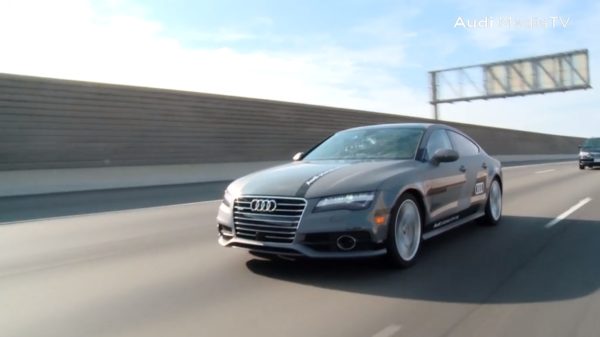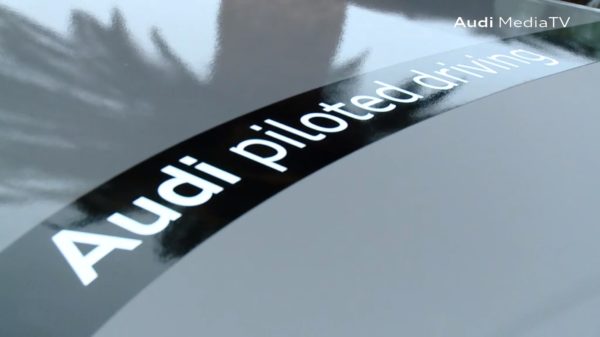Car makers around the world invite journalists for exotic drives of their new products. These cars are generally the production ready version of the vehicle which is about to be unveiled to the audience. Audi, however, has invited a bunch of journalists for a test drive of a pilot driving concept car which demonstrates the under-development automated driving technology. The drive will take place from Silicon Valley, California to Las Vegas, Nevada where the technology will be showcased at the International CES 2015 (Consumer Electronics Show).
Speaking about this new technology, Prof. Dr. Ulrich Hackenberg, Audi Board Member and Head of Technical Development said, “The test drive from the west coast of California to Las Vegas demonstrates our leadership role in piloted driving.” The test drive in real world traffic and road conditions represents a joint effort by the Volkswagen Electronics Research Laboratory (ERL) and Volkswagen Group Research and Development, begins in Stanford, CA and will cover more than 550 miles, approximately 900 kilometers. Each journalist will drive approximately 100 miles utilizing the piloted driving system.
The concept relieves the driver of driving duties from 0 to 70 mph, or just over 110 km/h. The car, that has been named “Jack” by the development team, can initiate lane changes and passing maneuvers. In addition, the A7 piloted driving concept accelerates and brakes independently. Before initiating a lane change to the left or the right, the vehicle adapts its speed to surrounding vehicles. If the speed and distance calculation is deemed safe, the vehicle initiates the lane change with precision and in a timely manner.
The piloted concept vehicle utilizes a combination of various sensors, many of which are nearly production ready. The long range radar sensors of the adaptive cruise control (ACC) and the Audi side assist (ASA) keep watch of the front and rear of the vehicle. Two mid-range radar sensors at the front and rear respectively are aimed to the right and left to complete the 360 degree view. Laser scanners are mounted within the Singleframe grille and the rear bumper skirt. The scanners deliver redundant information to provide detailed recognition of static and dynamic objets during piloted driving. The technologies are production ready including their vehicle integration and cost structure for vehicle production in the near future. A new hi-resolution 3D video camera, already integrated into the next generation systems found in the new Q7, takes a wide-angle view out in front of the vehicle. Four small front and rear mounted cameras view closer surroundings.Navigation data is used for basic vehicle orientation.
Before the piloted driving system reaches its limitations, in city environments for example, the driver is requested to take control of the vehicle to ensure proper safety. Multiple warning signales work in unison: colored LEDs at the base of the windshield, signals in the driver information display, a Central Status Indicator (CSI), as well as a acoustic warning indicator requires the driver to retake control. Should the driver ignore the signals, the system activates the hazard lights and brings the car to a full stop while minimizing any risk. In most instances the vehicle is stopped on the right emergency lane.
Stay tuned to Motoroids for more updates from the motoring world.


